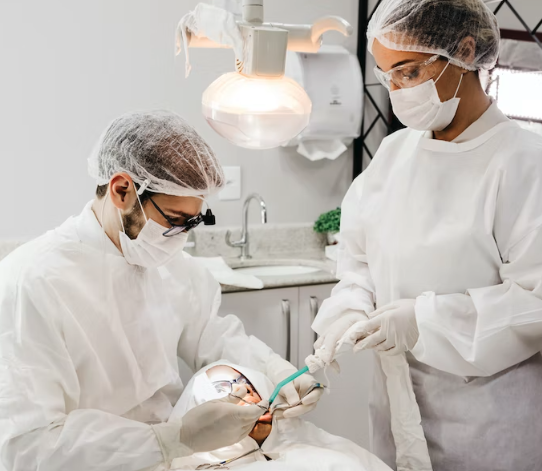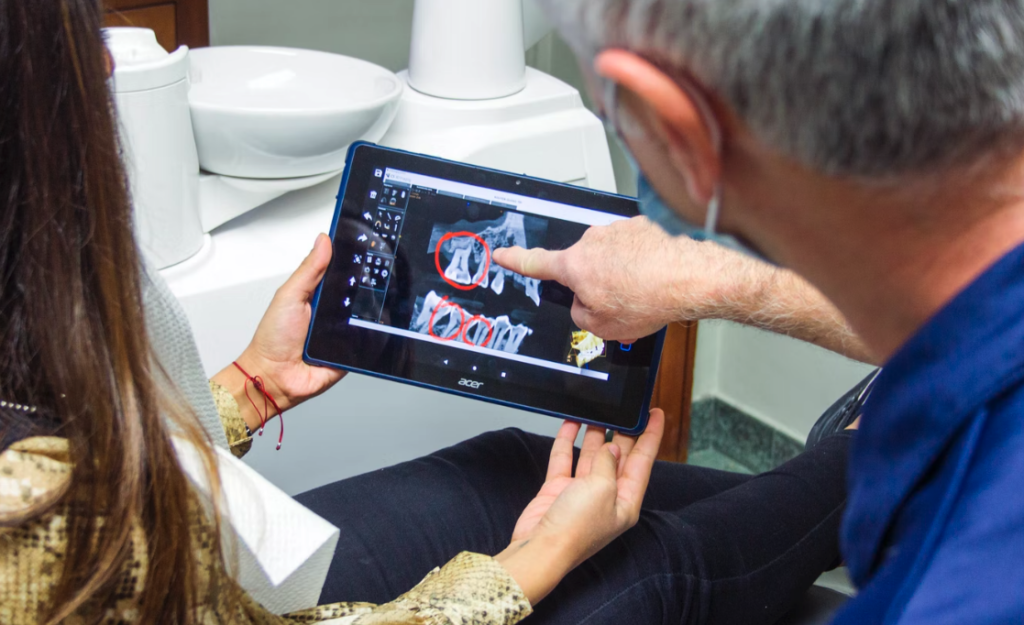Some people experience cracked teeth when the tooth experiences trauma. This is different than a chipped tooth, which is a clean break off of part of the tooth.
When a tooth is cracked, the cracked tooth will most likely need to be pulled to prevent infection from developing in the crack. However, if the crack is small and does not go down to the root of the tooth, a filling may be able to be used to fix the problem.
What happens if a cracked tooth is not extracted?
If a cracked tooth is not extracted and the crack is severe enough to allow infection to set in, this can lead infection and other serious health issues. Additionally, the tooth may eventually fall out on its own if it is not extracted.
If you have a cracked tooth, it is important to see a dentist as soon as possible to determine the best course of action.
Symptoms of Cracked Teeth
Cracked teeth can be very painful. If you have a cracked tooth, you may experience:
- Sensitivity to hot and cold temperatures
- Sharp pain when biting down
- Pain when eating or drinking
- Swelling around the gums
If you are experiencing any of these symptoms, you should see a dentist as soon as possible. They will be able to determine if your tooth needs to be extracted or if a filling will suffice.
How to Prevent Cracked Teeth
There are a few things you can do to help prevent cracked teeth:
- Wear a mouthguard when playing sports
- Do not use your teeth to open packages
- Avoid chewing on hard objects such as ice or hard candy
- Be careful when eating chewy foods such as caramel
If you have a cracked tooth, it is important to see a dentist as soon as possible to determine the best course of action. Cracked teeth can be very painful and if left untreated, can lead to infection or even the loss of the tooth. By taking preventive measures and seeing
What can a Dentist do for a Cracked Tooth?
When a dentist identifies a cracked tooth, the first thing they will do is take an x-ray to determine the severity of the crack. If the crack is small and does not go down to the root of the tooth, a filling may be able to be used to fix the problem. However, if the crack is large or goes down to the root of the tooth, an extraction will most likely be necessary to prevent infection.

After the tooth has been extracted, you may need to get a dental implant or bridge to fill the gap left by the missing tooth. This is a decision that you will need to make with your dentist.
If you have a cracked tooth, it is important to see a dentist as soon as possible to determine the best course of action. Cracked teeth can be very painful and if left untreated, can lead to infection or even the loss of the tooth. By taking preventive measures and seeing a dentist when you first experience symptoms, you can help ensure that your teeth stay healthy and intact.
Types of Cracked Teeth
Not all cracked teeth are the same, and the type of crack you have will determine the treatment. Here are the most common types of cracked teeth:
- Craze Lines: These are tiny cracks that appear in the outer enamel of your teeth. Craze lines are superficial and don’t cause pain or require treatment. They are usually harmless and often occur as people age.
- Fractured Cusp: This type of crack happens when a piece of the chewing surface of the tooth breaks off, typically around a filling. While it may cause discomfort, it doesn’t usually reach the root, so extraction is often unnecessary. A crown or filling is usually enough to repair it.
- Cracked Tooth: This type of crack extends from the chewing surface toward the root but doesn’t split the tooth into two parts. If caught early, a dentist can often save the tooth with a crown to protect the structure. However, if the crack reaches the root, extraction may be necessary.
- Split Tooth: A split tooth is a more severe form of a cracked tooth. The crack extends through the entire tooth, splitting it into two or more sections. Unfortunately, in most cases, a split tooth cannot be saved, and extraction will likely be required.
- Vertical Root Fracture: These cracks start at the root and move upward. They are often not visible and can be difficult to detect. If the fracture becomes infected, the tooth will usually need to be extracted.
Can Cracked Teeth Heal on Their Own?
Unlike bones, cracked teeth cannot heal themselves. Once a tooth is cracked, it will need some form of dental intervention to prevent further damage or infection. However, some minor cracks, like craze lines, may not need treatment beyond keeping your teeth clean and monitored by a dentist. For deeper cracks, prompt treatment is essential to prevent complications, such as tooth loss or the need for extraction.
Treatment Options for Cracked Teeth
When it comes to treating cracked teeth, the options vary depending on the extent of the damage. Here are some common treatments:
- Bonding or Filling: For minor cracks, dental bonding or a filling can be used to seal the crack and prevent further damage. This is typically a quick procedure that involves applying a tooth-colored resin to the cracked area.
- Dental Crowns: If the crack is more severe but has not reached the root, a dental crown can be placed over the tooth to protect it. A crown covers the entire tooth, helping to prevent the crack from spreading further. Crowns are usually made of porcelain or ceramic and can last for many years with proper care.
- Root Canal: If the crack extends into the pulp (the soft tissue inside the tooth containing nerves and blood vessels), a root canal may be necessary. This procedure removes the damaged pulp and seals the tooth to prevent infection. After a root canal, a crown is usually placed on the tooth to restore its strength and function.
- Extraction: If the crack is too deep or if the tooth is split, extraction may be the only option. After extraction, your dentist will discuss options for replacing the missing tooth, such as dental implants, bridges, or partial dentures.
Can Cracked Teeth Be Prevented?
While not all cracked teeth can be prevented, there are steps you can take to reduce your risk:
- Avoid Chewing Hard Objects: Biting down on ice, hard candy, or other tough items can increase your risk of cracking a tooth.
- Wear a Mouthguard: If you play sports, especially contact sports, wearing a mouthguard can help protect your teeth from injury.
- Don’t Use Teeth as Tools: Using your teeth to open packages or bottles can lead to cracks and other damage.
- Address Teeth Grinding: If you grind your teeth at night (a condition known as bruxism), wearing a nightguard can help protect your teeth from cracks caused by grinding.
- Regular Dental Visits: Seeing your dentist regularly for cleanings and exams can help detect cracks early and prevent them from worsening.
Contact Family Tree Dental Today!
If you are located in Ohio and you are looking for a dentist that can help you with a cracked tooth, look no further than Family Tree Dental. We are proud to offer a wide range of dental services to our patients and we would be more than happy to help you with your dental needs. Contact us today to schedule an appointment! We have offices in Marietta and Belpre, Ohio as well as in Parkersburg, WV.




